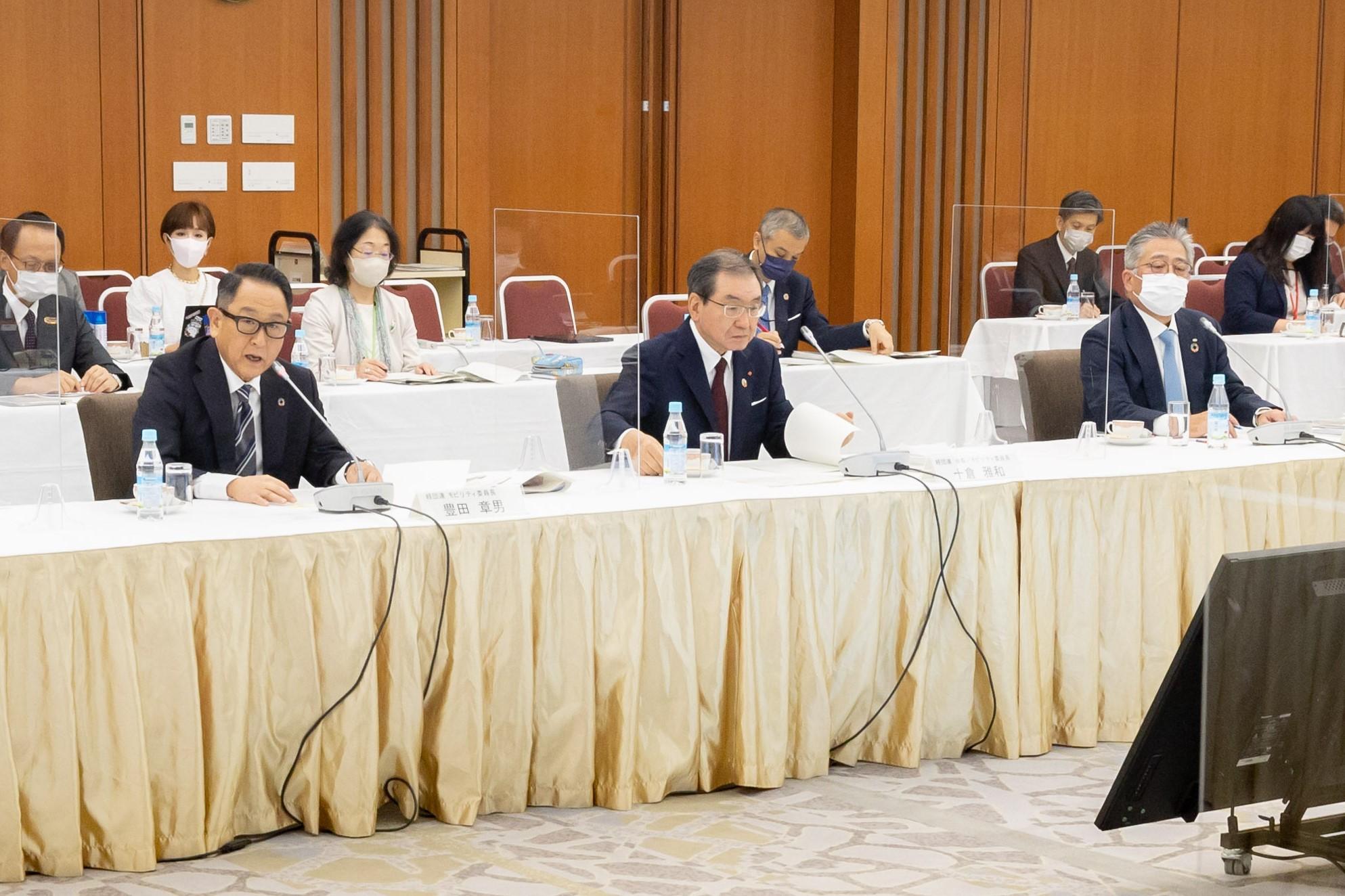
The newly established Keidanren Committee on Mobility kicked off in September. Having garnered much attention and gained registration from over 200 companies, what is the group hoping to achieve?

On September 22, the Keidanren (Japan Business Federation) Committee on Mobility held its inaugural session.
The committee will be led by three chairs: Keidanren Chairman Masakazu Tokura, Japan Automobile Manufacturers Association (JAMA) Chairman Akio Toyoda, and Japan Auto Parts Industries Association (JAPIA) Chairman Koji Arima.
What exactly does the committee do? How is it different from JAMA, which works on industry-wide automotive issues? Here, Toyota Times breaks down four key points about this new organization.
Point 1: What is the Committee on Mobility?
Keidanren, a comprehensive economic organization with nearly 1,500 representative Japanese company members, oversees some 70 committees organized by country/region and around business topics.
In June 2022, Keidanren set up three committees with the aim of stimulating industries for Japan’s economic growth. The Committee on Mobility is one of these new endeavors.
Member companies from the automotive sector and other industries will discuss challenges related to the movement of people and goods.
The committee has received much attention in Japan for being chaired by three top business leaders: Sumitomo Chemical Chairman Masakazu Tokura, Toyota President Akio Toyoda, and Denso Corporation President Koji Arima.
In addition, over 200 companies have registered with the committee across various industries. As a result, the kickoff meeting brought together more than 300 attendees.

Point 2: How does the committee’s role differ from JAMA?
The next question is how this committee differs from JAMA, which also discusses mobility-related issues.
Simply put, the committee’s creation makes it easier to cooperate with other industries/companies outside of the five leading automotive associations: JAMA, JAPIA, Japan Auto-Body Industries Association, Japan Automotive Machinery & Tool Manufacturers Association, and Japan Automobile Dealers Association.
JAMA has led cooperation among those five associations and called for safeguarding the jobs of the 5.5 million individuals in Japan’s auto industry for a few years now.
However, companies belonging to the member associations employ 2 million people, less than half of the 5.5 million. There has been an increasing need to collaborate more closely with the remaining 3.5 million working in other industries, such as energy and logistics.
At the committee’s first session, Akio stated that “carbon neutrality, in particular, is a huge challenge that will compel us to change how we live and move. We must tackle it by bringing together forces of all people and all industries.”
For the last two years, Akio has reiterated the importance of pursuing carbon neutrality based on each country’s energy and infrastructure situation while keeping open an array of technological options to accelerate CO2 reduction and zero emission efforts. To demonstrate these beliefs, he has gotten behind the wheel of an in-development hydrogen-engine vehicle at motorsports races.
His call for a better understanding of carbon neutrality has attracted many like-minded partners, as shown in the growing number of companies jointly working on the hydrogen engine.
Collaboration across industries is essential to expand this circle further and reduce CO2 emissions in all processes of producing, transporting, and using energy.
“The automotive industry creates large ripple effects, which will only continue to extend further through green transformation and digital transformation. That’s why these efforts need to span all sectors,” said Chairman Tokura, echoing these sentiments also as the head of Keidanren. “We hope to see all industries joining in the effort to boost Japan’s competitiveness, with the mobility industry serving as the crucial pacesetter.”

